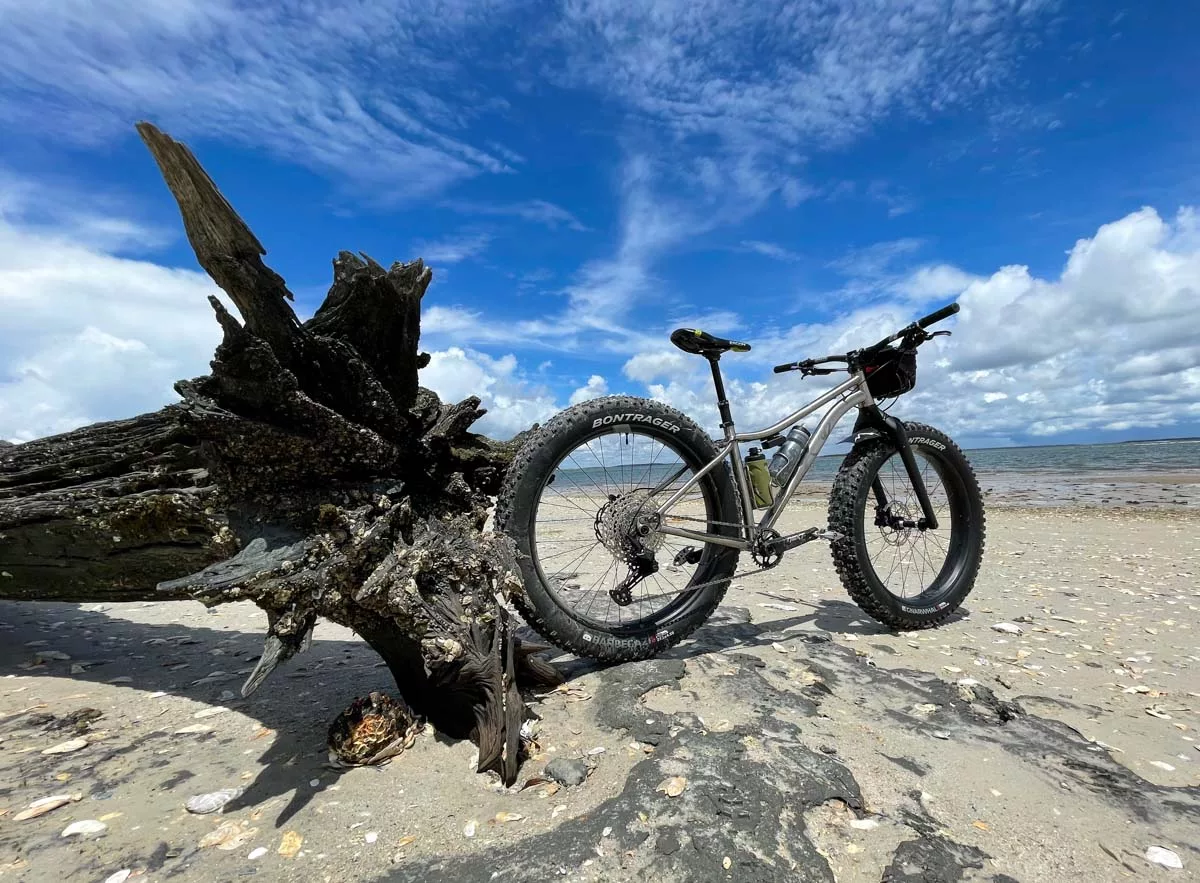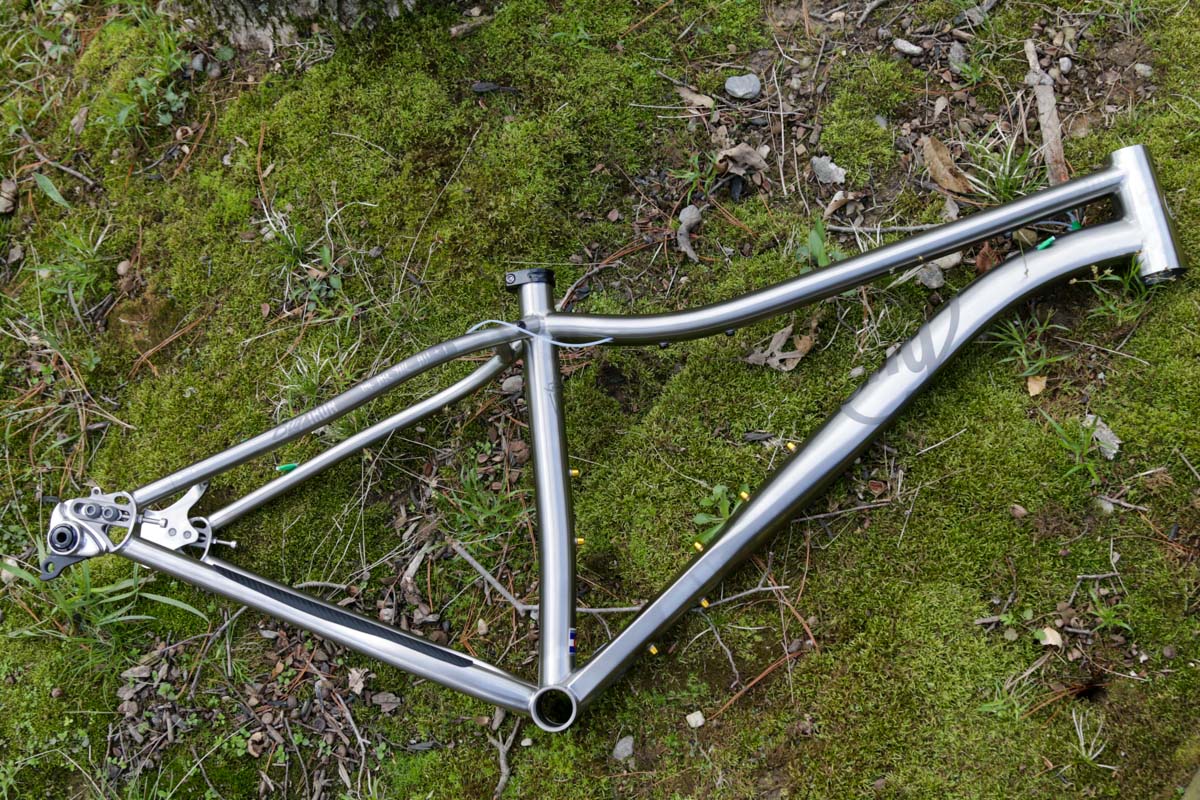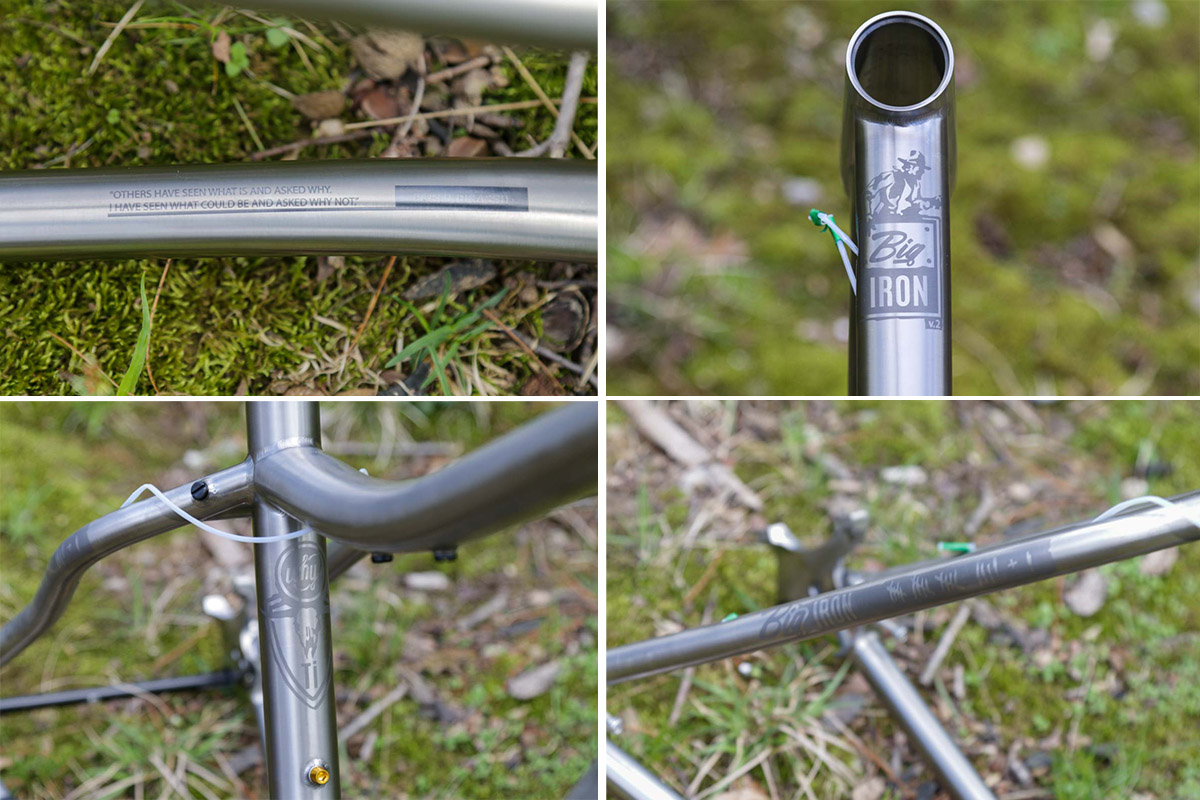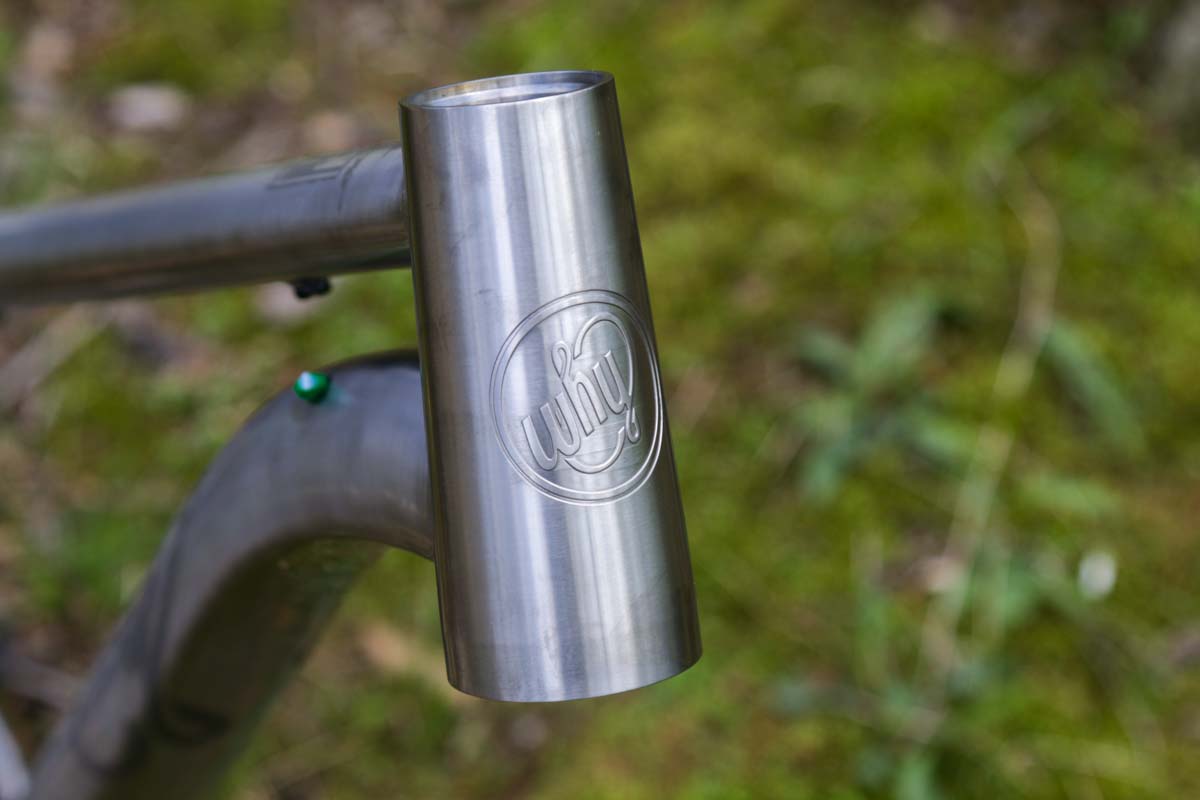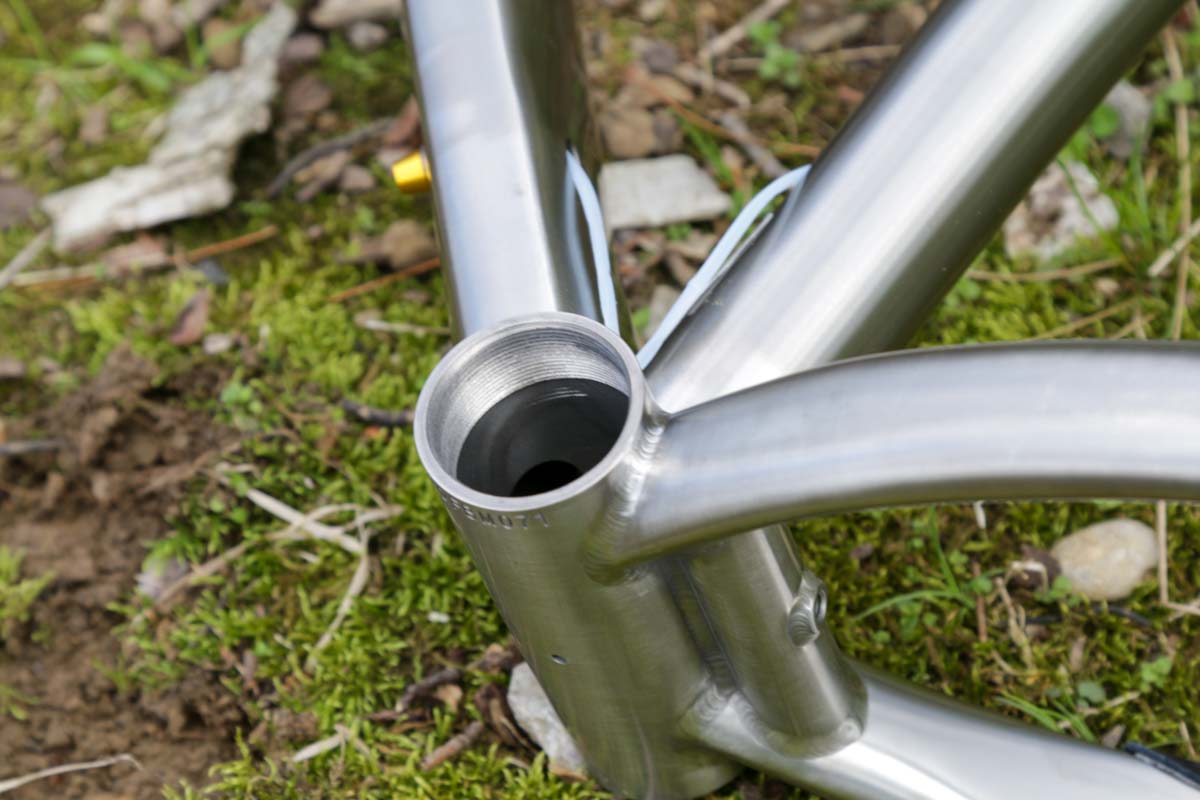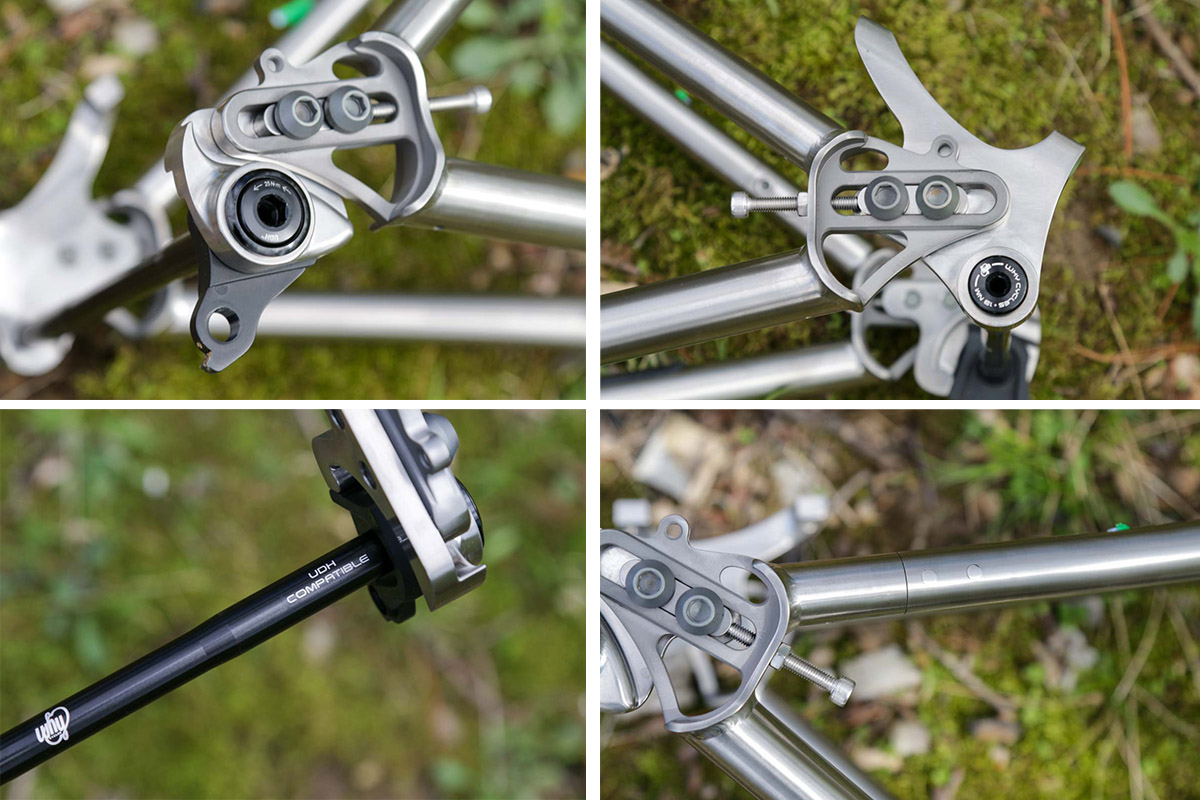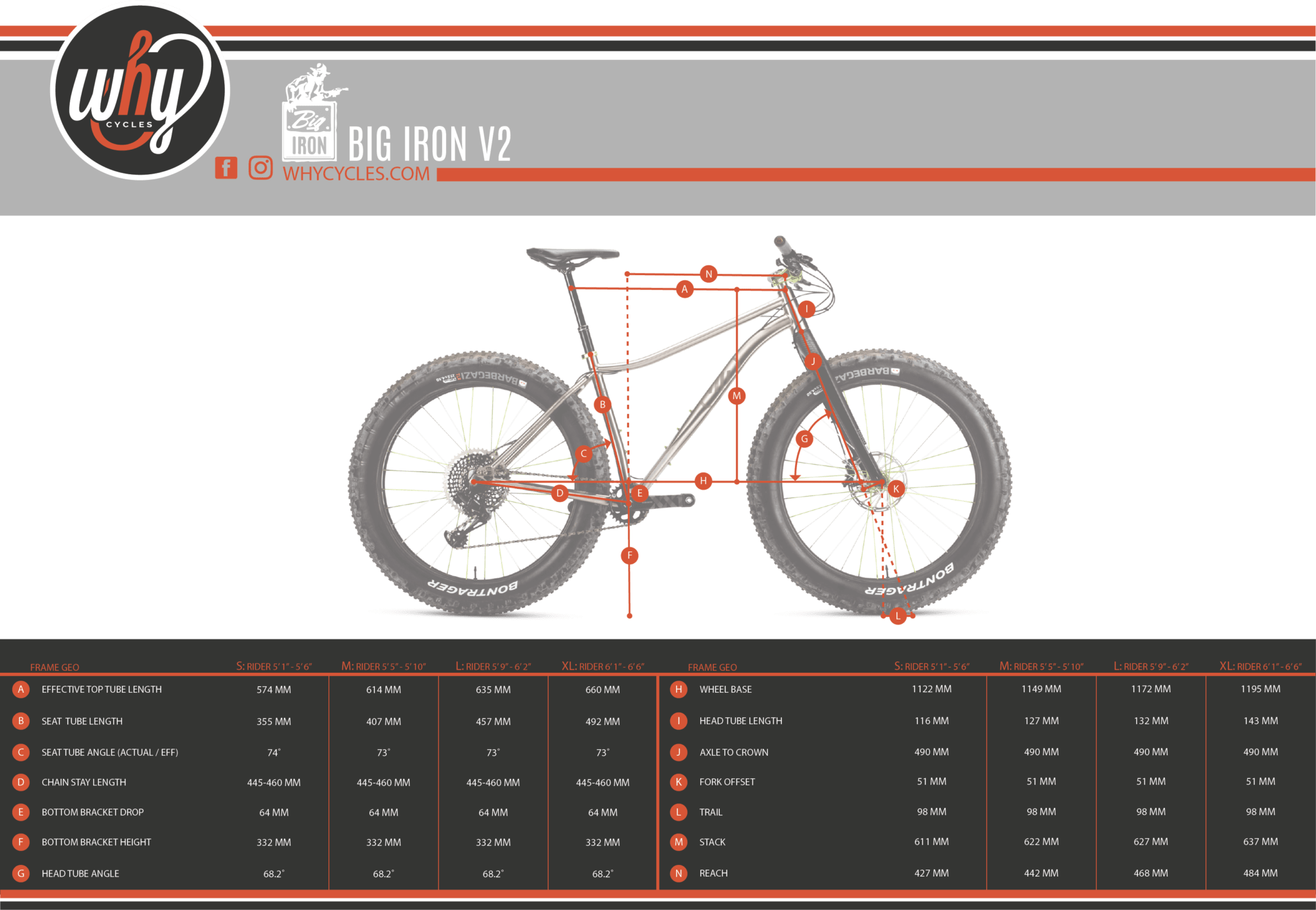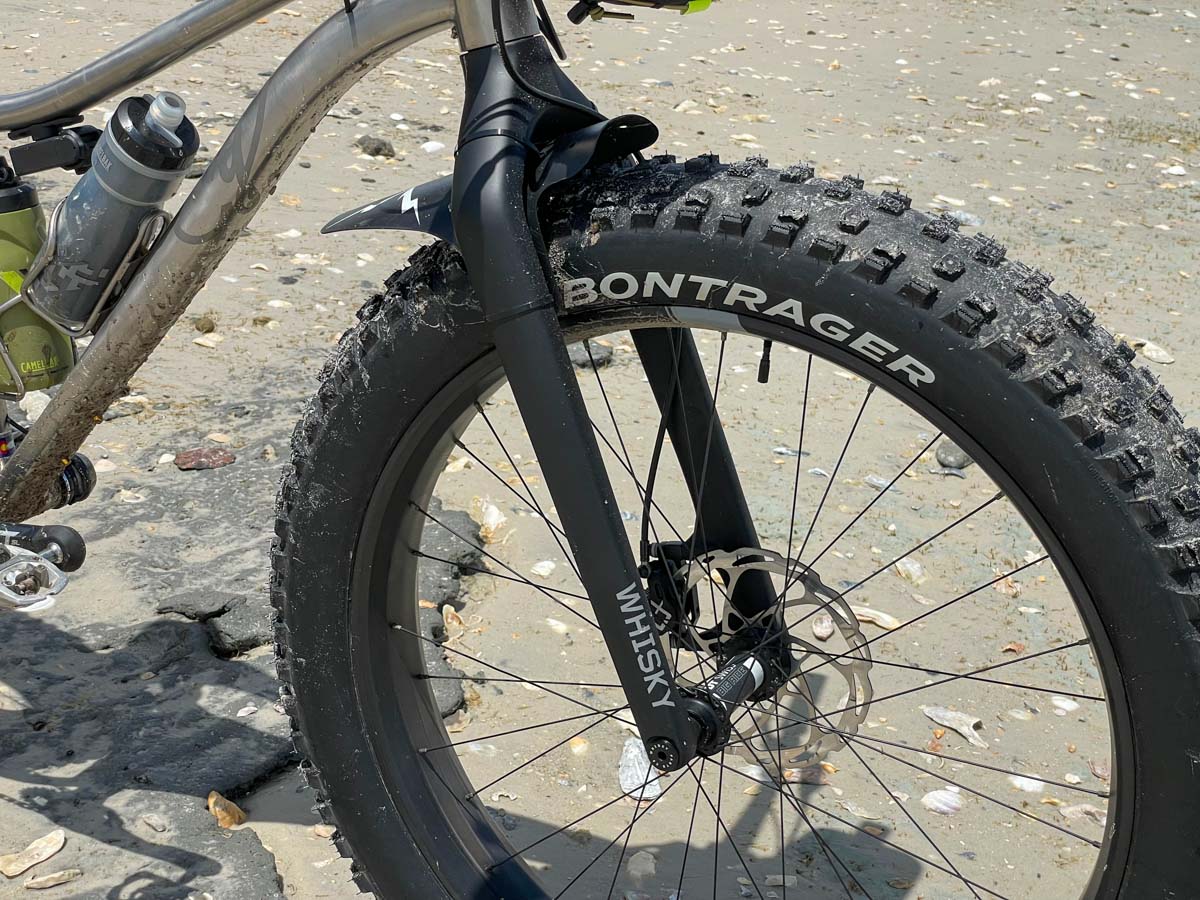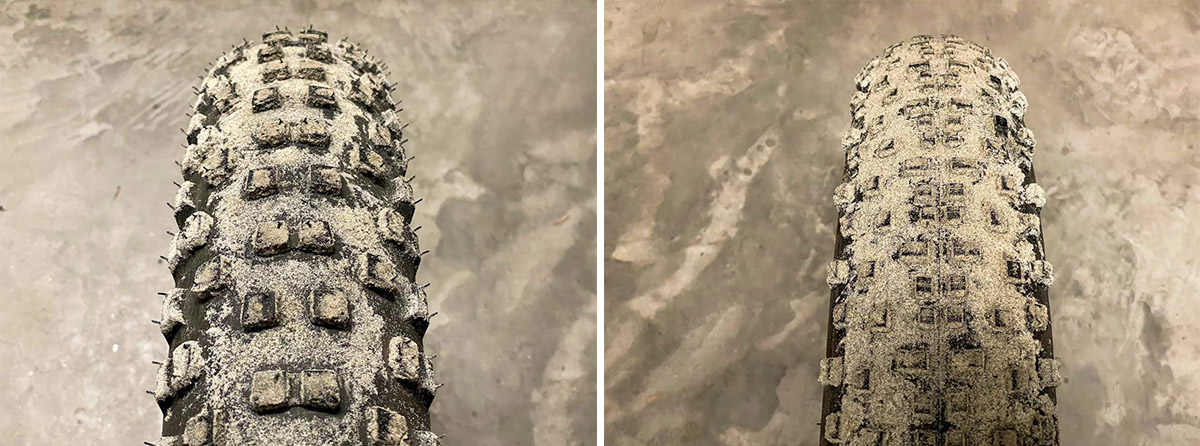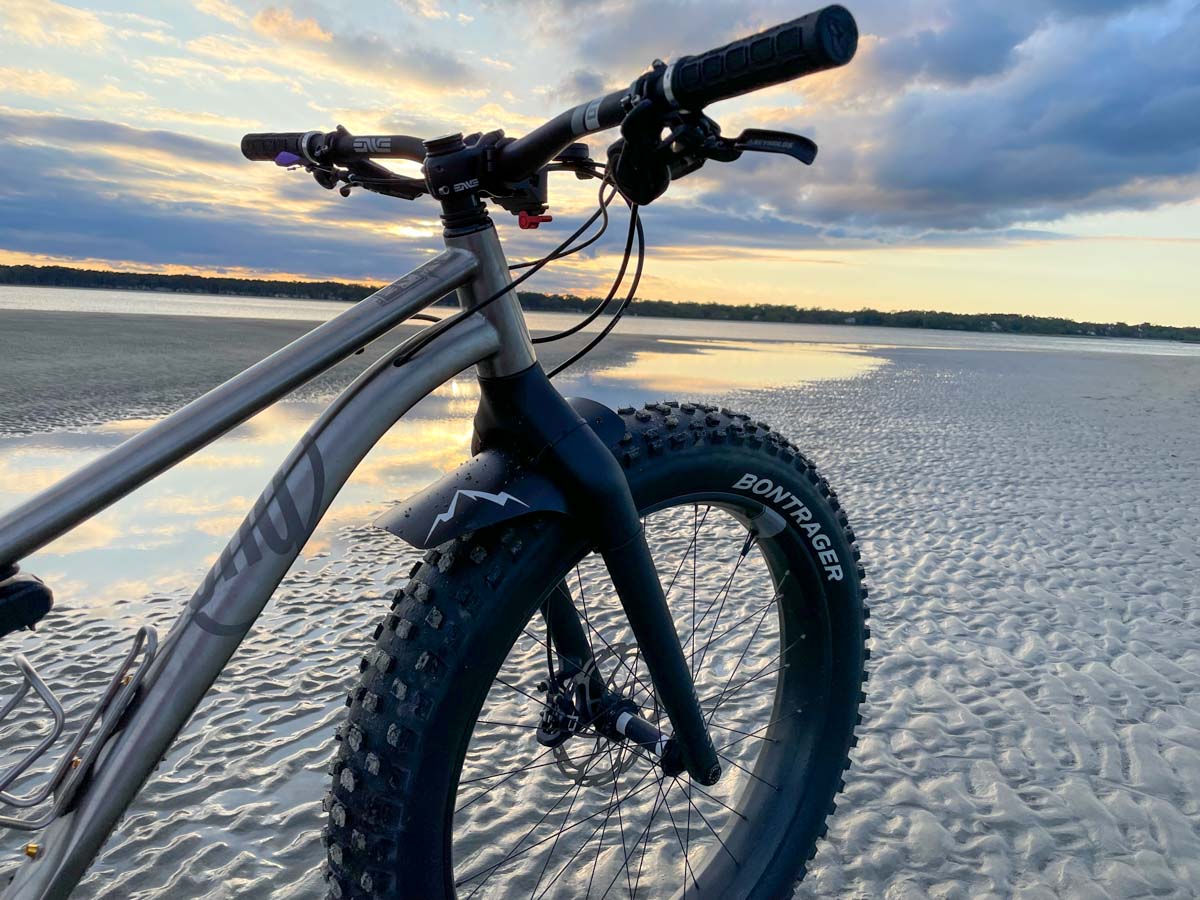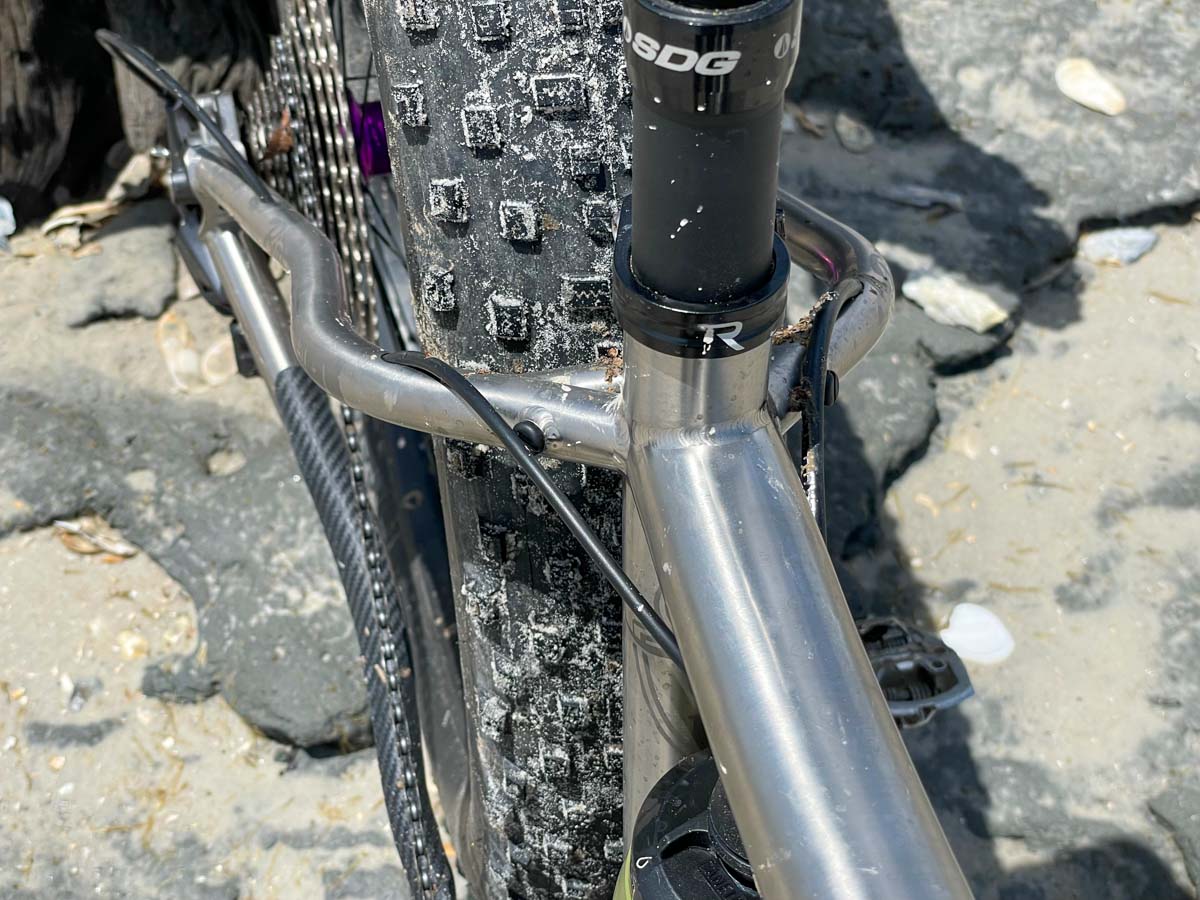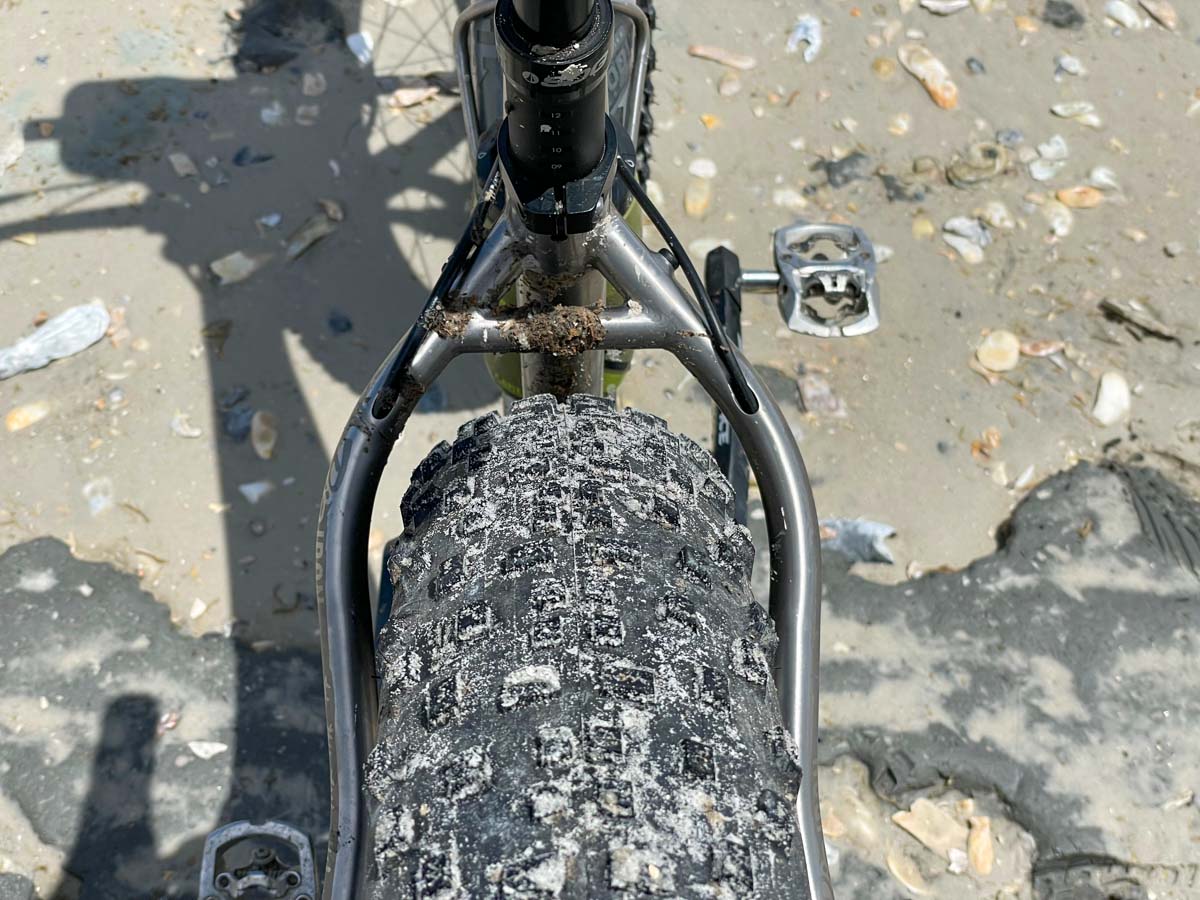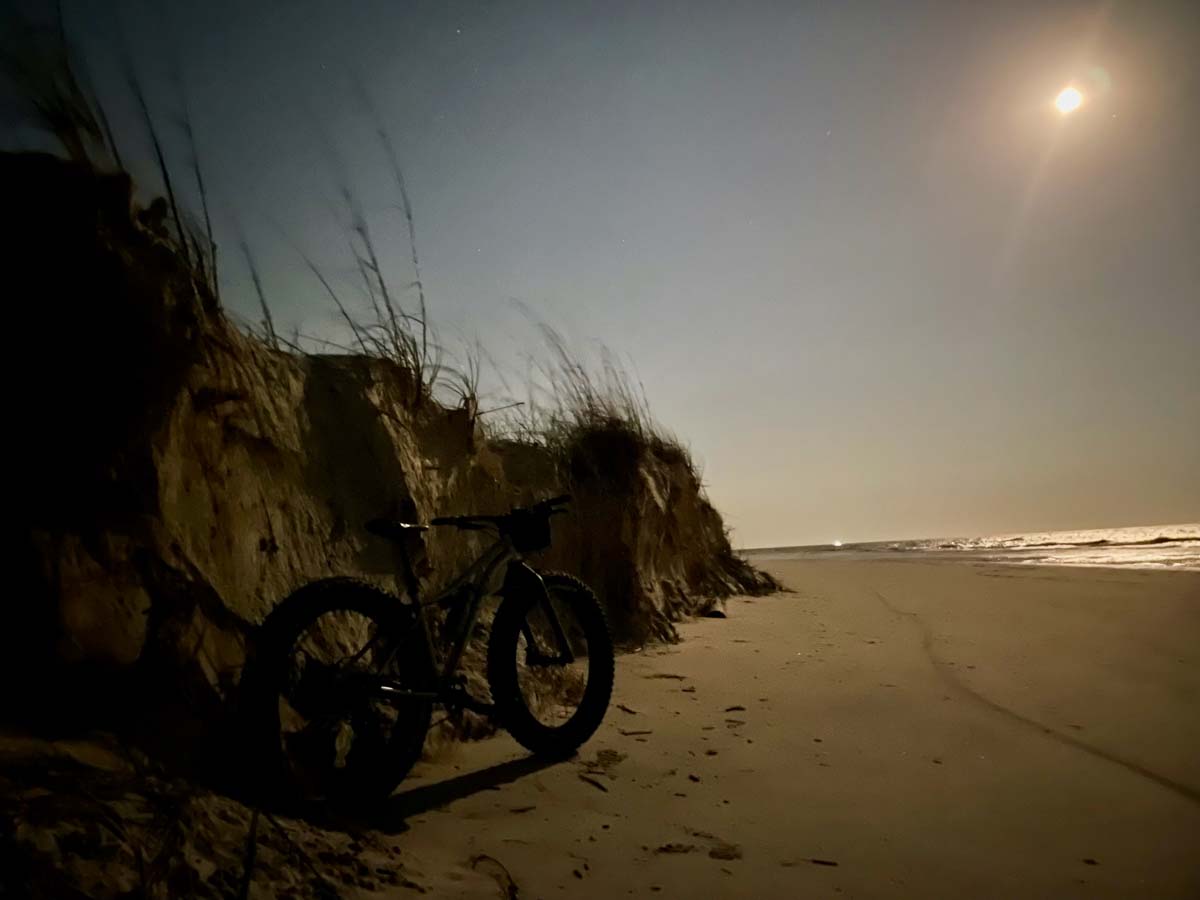In 2018, Why Cycles finally released the news I had been waiting for – Adam Miller was once again designing fat bikes. After launching Borealis bikes (and creating my favorite fat bike of the time), eventually, he left to pursue future bike companies. That’s how we ended up with Why Cycles, and later, Revel Bikes.
Even though Why Cycles’ titanium builds seemed like the perfect chance to create another fat bike, a non-compete clause meant we would have to wait. Eventually, we were shown the all-new Why Cycles Big Iron – a big titanium fat bike meant to run the biggest tires on the block.
That bike was good, but it wasn’t enough to make me want to give up my original Borealis Echo. But when Why Cycles released the Big Iron V2 in November, 2021, I knew I needed to test it. And apparently, I also needed to bring my wallet.
Big Iron V2 Frame Details
The Big Iron V2 starts off with a lot of similarities to the V1. It’s a Grade 9 3/2.5 titanium frame with 6/4 titanium used for the head tube, bottom bracket shell, and other machined parts, and it’s meant to run either 27.5 x 4.5” or 26 x 5.0” fat bike tires.
In spite of the huge tire clearance, the adjustable dropouts allow for chain stay length as short as 445mm, or as long as 460mm. That adjustability also makes for a fat bike that can be run single speed, or as a belt drive, thanks to the split in the seat stay. V2 includes the move to a SRAM UDH dropout, and a new accessory mount, but the biggest change would have to be the geometry itself. It’s not that the geometry of V1 was bad, but Why definitely nailed the geometry with V2.
Why Big Iron V2 Geometry
The new bike has a slightly longer reach paired with a higher stack height – both of which are said to improve front-end handling in loose conditions with low tire pressures. Additionally, the seat tube is lower which allows for running longer dropper posts, and the top tubes have a more aggressive dip for better standover clearance.
On paper, it doesn’t sound like much. But on the trail, the results are unmistakable. V2 feels less like a tractor, and more like a nimble mountain bike that just happens to run massive tires. The new geometry contributes to the bike feeling lighter overall – though my build is a lighter bike as well, compared to the V1 I tested.
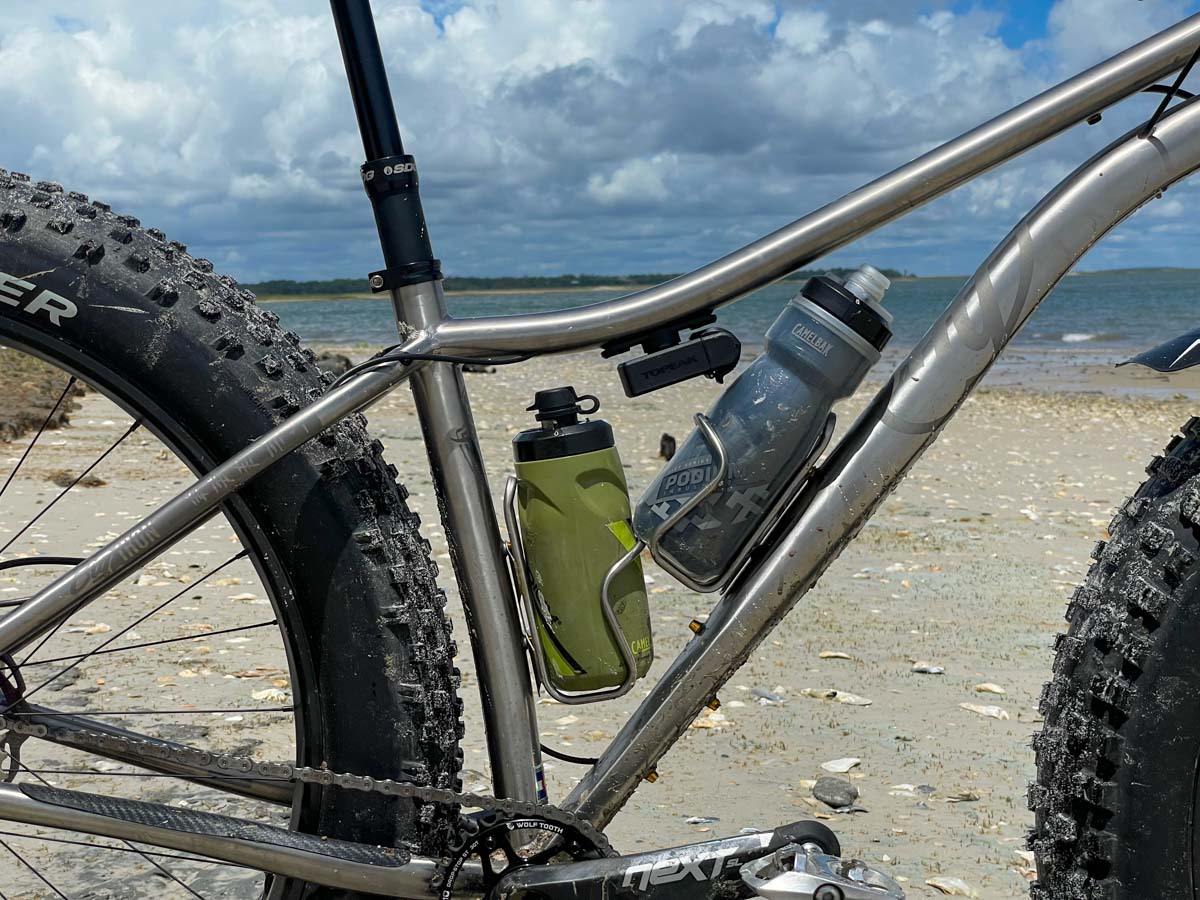
Fat Bike Fork Considerations

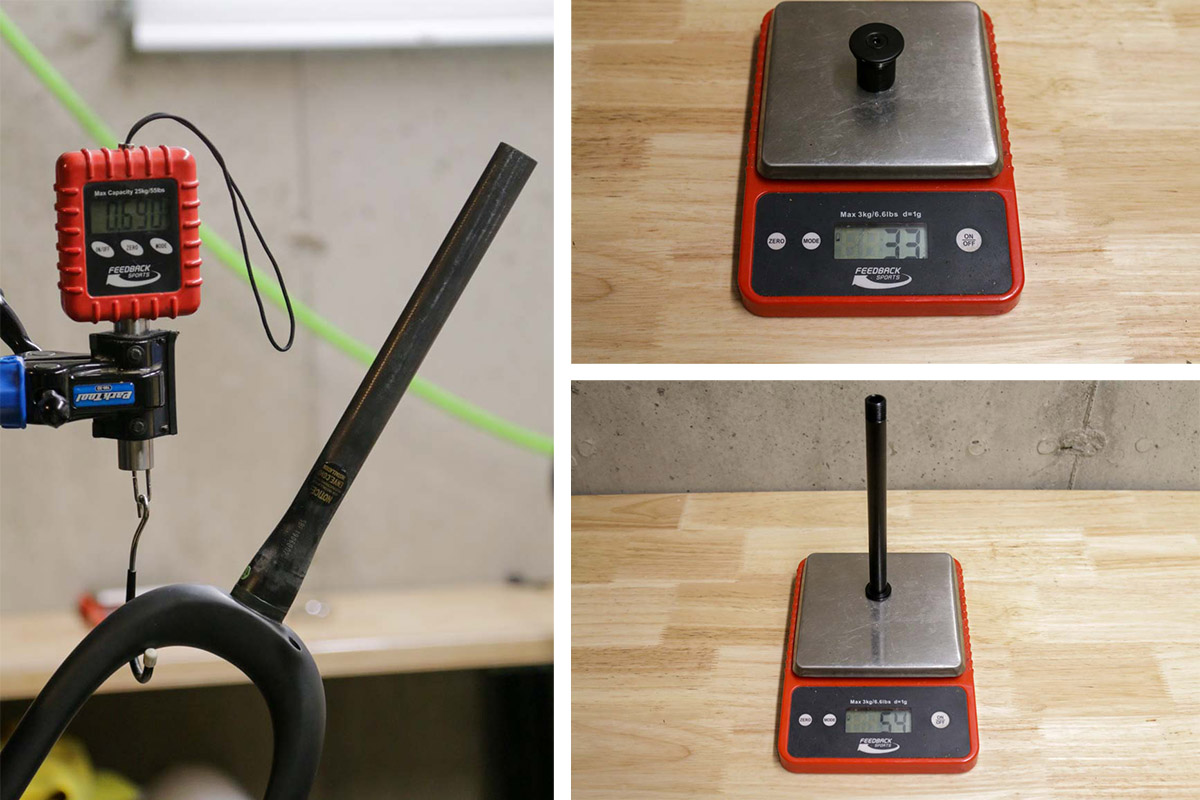
I requested the V2 as a frameset, as I had a lot of the parts and wanted to build my own. The frameset included the ENVE Fat Fork, but I was surprised to find that the Whisky Parts Co. No. 9 Fat 15mm 150 fork actually had the edge on spec. Based on the information online, the ENVE should be lighter at 748g claimed for ENVE and 804g claimed for Whisky. But in terms of actual weights, the Whisky wins out at 741g while the ENVE is 777g (fork+axle+compression plug).
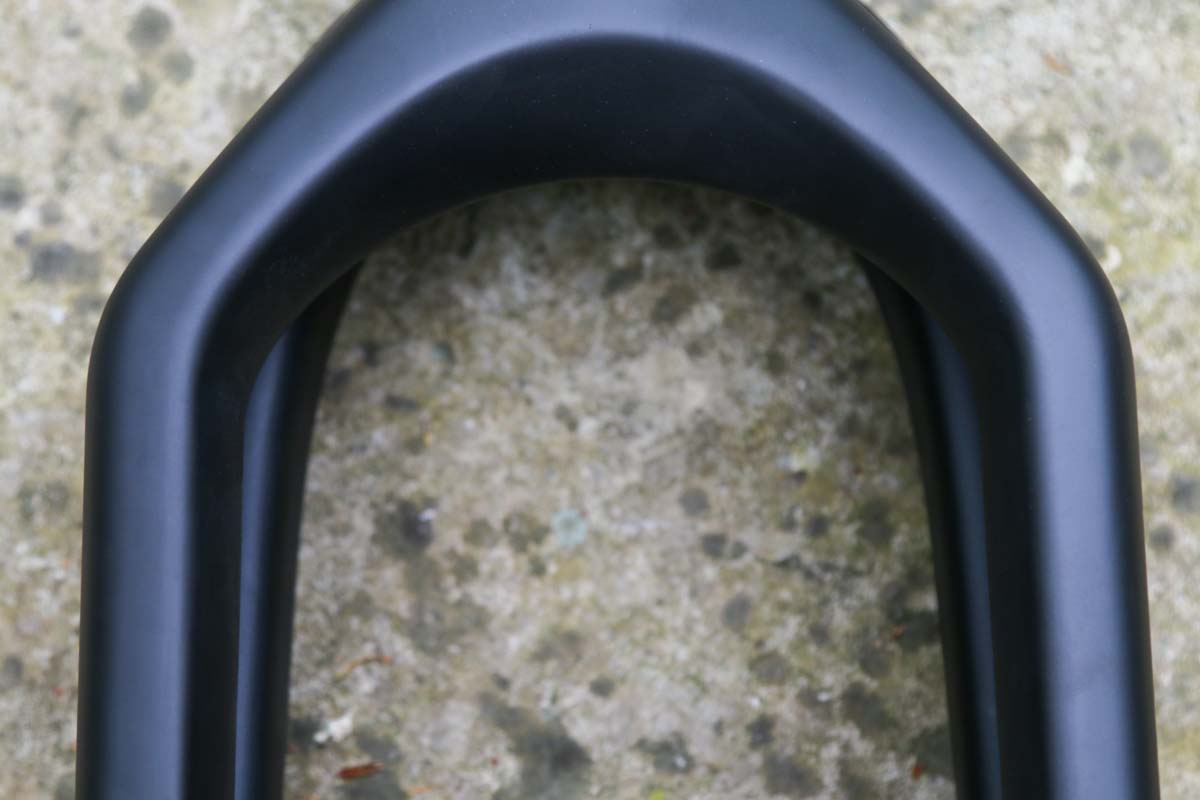
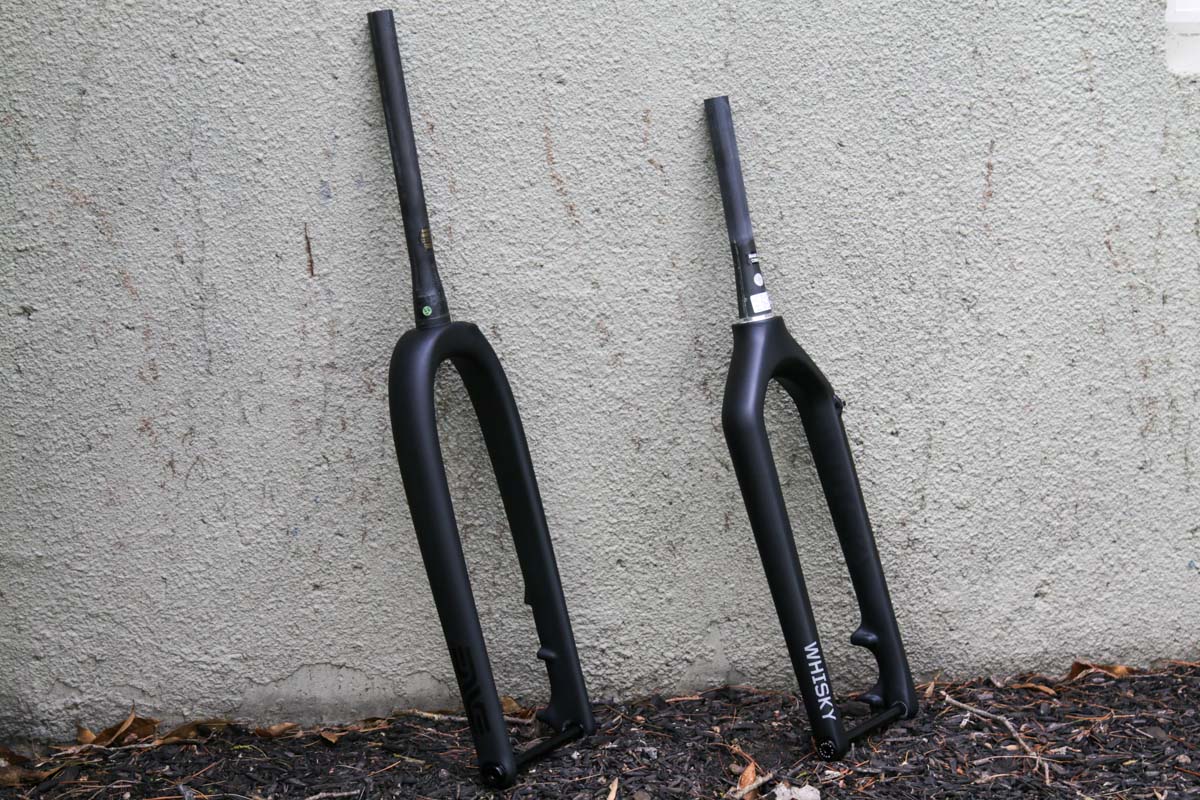

To be fair to ENVE, their fork has a 3.5″ longer steerer tube (13.5″ vs 10″) so the weight difference may be closer than it seems. The ENVE is also the clear choice if you need the longest steerer tube possible for the tallest stack height. However, for me the Whisky is the better choice since it has external brake cable routing.
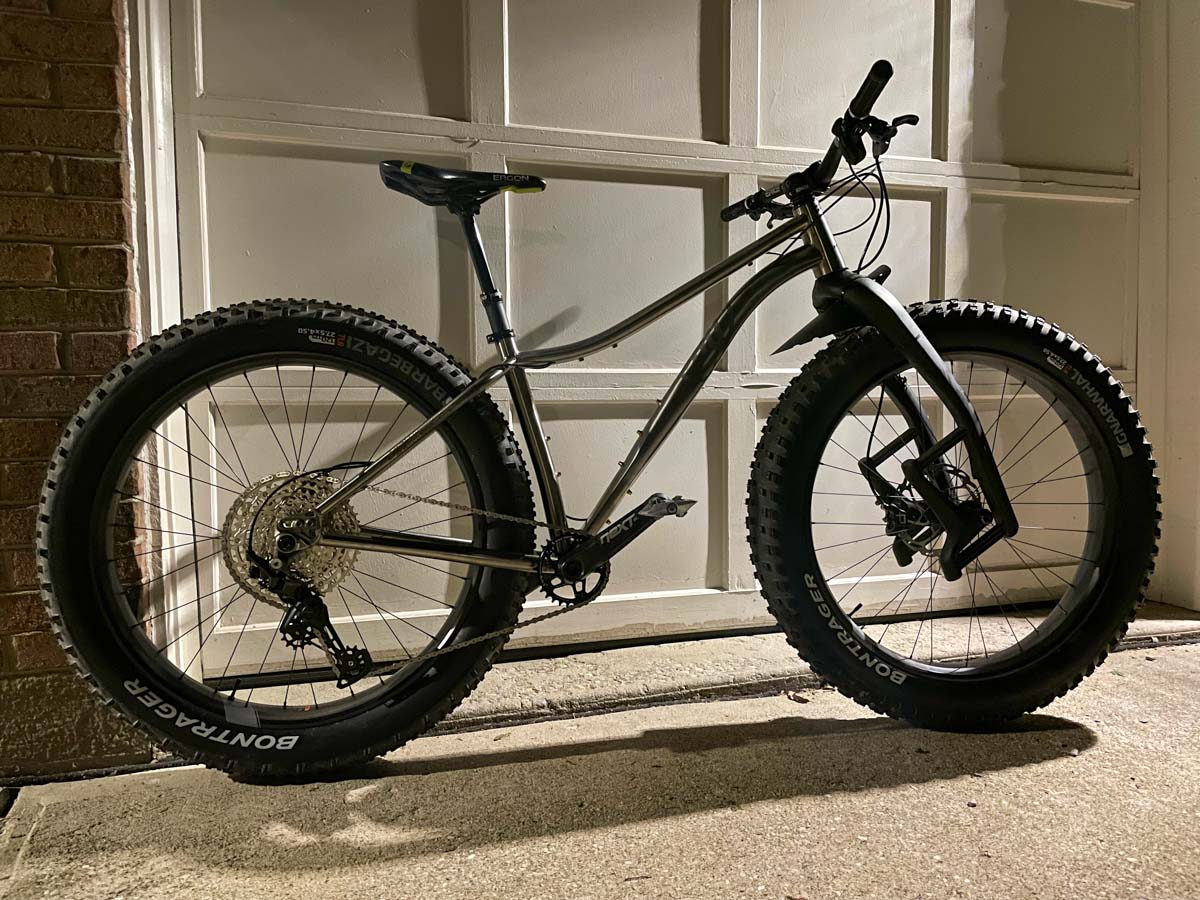
I swap between rigid and suspension forks more on fat bikes than I do any other type of bike. Therefore the ability to not have to bleed the brakes to swap out the fork is a huge advantage for the Whisky. On the flip side, if you don’t plan to swap between forks but you do plan to swap between 26 and 27.5″ wheel sizes, the ENVE’s adjustable fork rake could make it the better option.
I went with the Whisky fork, and also happened to have a set of older Whisky fat bike No. 9 carbon fat bike rims built to DT Swiss/Industry Nine fat bike hubs, so it seemed like a perfect match. Originally, the wheels were built with DT Swiss hubs front and rear, but with a 177mm rear hub. I had to swap out the hub to 197mm to fit the Devinci Minus I was testing (another great 27.5″ fat bike, but not quite to the level of Why). Eventually, I plan to swap out the front hub to match.
Build Kit
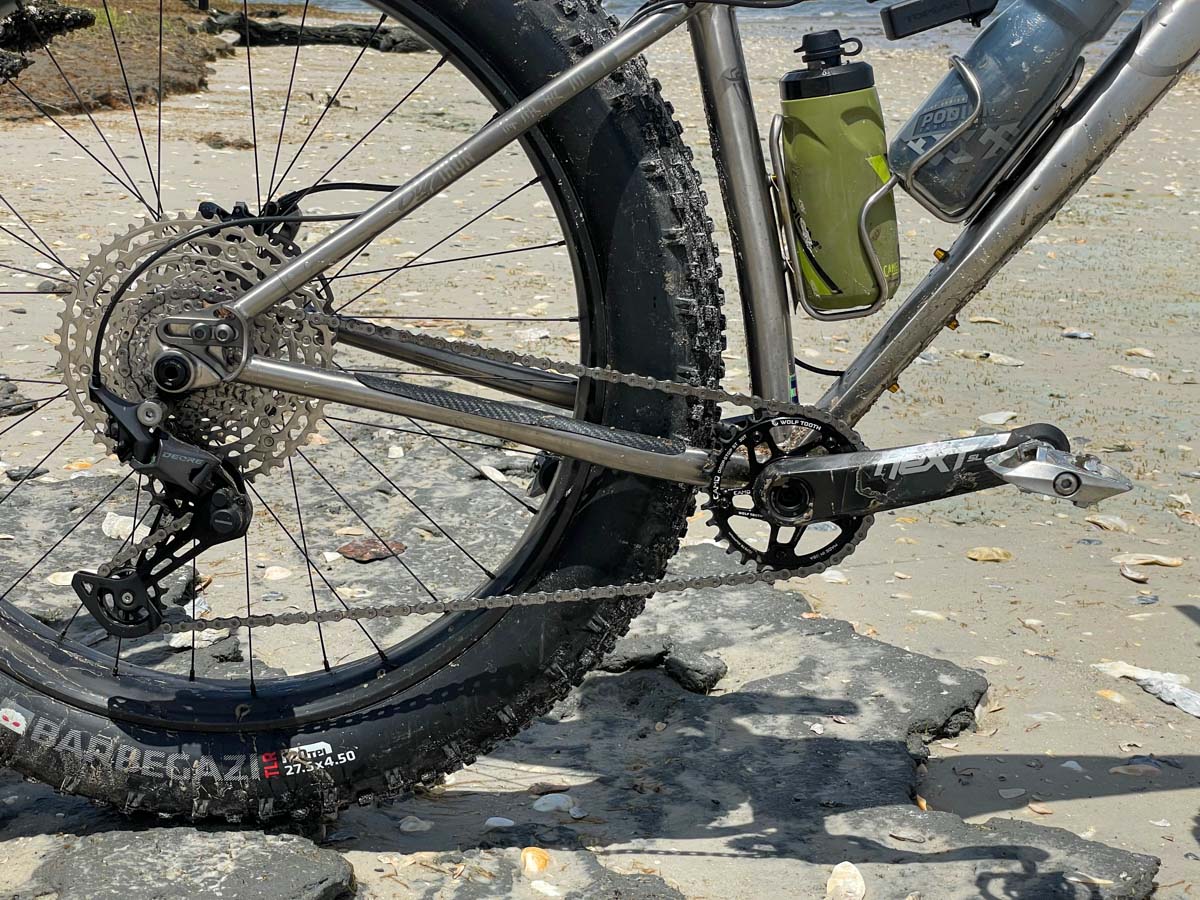
The overall build certainly leaned toward lightweight parts with Hayes Dominion T2 brakes with Reynolds carbon levers and 180/160mm rotors (note most carbon fat bike forks can only handle up to 180mm rotors), an ENVE M6 carbon bar at 780mm wide and 40mm ENVE carbon MTB stem, WTB lock-on grips, and an Ergon SME-3 M saddle with carbon rails. But with a Shimano Deore 1×12 drivetrain and SDG Tellis dropper, there’s still room for some weight reduction.

In spite of that, the complete build is surprisingly light at 27.34lbs /12.41kg without pedals, but with 4oz of sealant per tire. Certainly, lighter tires helped with the overall weight – especially when you consider just how heavy 27.5” fat bike tires are. While the V1 left me feeling like I still preferred 26” fat bike tires, this time around I specifically wanted to build a 27.5” bike as a platform to test out the latest wheels and tires. Naturally, I still have an Otso Voytek running 26” wheels and tires, so it made sense to run 27.5” this time around.
27.5″ Fat Bike Tire Choice
That meant I could finally make use of some 27.5” x 4.5″ Bontrager Gnarwal/Barbegazi tires I’ve had sitting around for some time. These weigh in at 1334g for the front Gnarwhal, and 1253g for the Barbegazi.
Realistically, in deep snow, the rear tire wouldn’t be my first choice. But for a summer beach tire, the combination isn’t bad. Along those lines, as a summer beach tire, the front tire has a huge amount of rolling resistance and was way more tire than I needed for everything but the deepest, loosest sand. The Bontrager tires also measure smaller than claimed at 4.27″ wide on the Whisky No. 9 80w rims, though I’m not sure that’s a bad thing. It seems like the ideal tire size for this bike is somewhere in the 27.5 x 4-4.3” range, which are generally lighter than the true 4.5” tires. This seems like a perfect bike for the Terrene Yippee Ki Yay, though I haven’t been able to try those yet.
I also have a set of 45NRTH Dillinger 5 27.5 x 4.5″ tires that I’m excited to try out this winter, though they are a good bit heavier at 1569g per tire.
Compared to the ~1607g 27.5 x 4.5” Terrene Cake Eater tires on the V1 though, the Bontrager tires felt much lighter and easier to spin up. This was one of the first 27.5” fat bike tire and wheel combinations I’ve tried that offered great flotation and didn’t feel like pigs – but obviously at a cost. The benefits of the bigger wheel are apparent in many situations, but you almost have to run pricey carbon rims and the lightest tires set up tubeless to make the bigger wheels and tires feel less cumbersome.
With that said, this is the first 27.5” fat bike build that has actually impressed me to the point of wanting to buy it.
Q-Factor

Other than the increased weight of 27.5” wheels and tires, the other thing to consider on a fat bike like this is q-factor. Obviously, with the ability to clear a 5” fat bike tire, your q-factor can only be so narrow. Generally, the wider the tires, the wider the q-factor.
In this case, the 100mm threaded bottom bracket and chain stay width require one of the wider cranksets available. If you want the narrowest q-factor the frame will allow, you’ll either want to run the Race Face Next SL cranks with an RF169 spindle or one of the SRAM XX1 or X01 Eagle Dub cranksets. These all have a q-factor of 203mm (OK, 203.3mm for the SRAM cranks). You’ll also need something like a Wolf Tooth Components Camo ring with a +3mm offset spider. Technically, these RaceFace cranks should have a q-factor that’s only 1mm narrower than the Truvativ Stylo fat bike cranks that were on V1, though it seemed to bother me a lot less this time around.
One thing to consider though – in my quest of the lowest q-factor, I noticed that it’s possible for my calves to just rub on the seat stays if I move around on the bike (I also noticed this on V1). To be fair, I’m somewhat double-jointed, have fairly wide calves for my size, and noticed the rubbing mostly while wearing flip-flops pedaling back and forth from the beach. It’s not a deal-breaker though as it’s less of an issue when riding clipless. Though I will say Why did a great job of routing the cables to avoid any sort of braze-on or protruding cable in that area.

While the frame offers the ability to adjust the chainstay length with adjustable dropouts, I just removed the adjuster screws and slammed the dropouts as far forward as possible. If you were running other 27.5 x 4.5″ tires, you might not be able to do this, but on the Bontragers, I had plenty of tire clearance. It also resulted in an impressively agile ride that belies the tire size of the bike.
Yes, my build is almost 2lbs lighter than the Big Iron V1 that I rode with 27.5 x 4.5″ tires, but it seems like the new geometry is just as important to the overall ride as the weight. It’s more fun to pedal, easier to maneuver, and just a better riding bike overall.
Have to have it?
Obviously, getting a new fat bike in May of this year means I haven’t been able to try it in snowy conditions yet. But I spent just as much time on both V1 and V2 at the beach, and the difference in handling is night and day. And to be 100% honest, I would give up riding in the snow ever again, if it meant I could do more super-full-moonlit fat bike rides on completely deserted beaches like the one above. I don’t qualify many rides as ‘magical’, but there’s something so incredible about riding without any lights, being able to see almost as it was daylight, and flying down a deserted beach as the waves crash around you.
Alas, the beaches are a little too far away to make that a regular occurrence, but I have no doubt that V2 will still be one of my favorite fat bikes as soon as the snow flies – which is the reason I sent Why Cycles a check instead of sending the bike back.
Why Cycles Big Iron V2 Frame Specs
- Headset Integrated standard 42mm upper cup, 52mm lower cup
- Bottom Bracket Threaded 100mm BSA standard
- Axle Spacing Boost 12mm x 197mm
- Dropouts 12mm Thru Axle, 1.75 thread pitch, adjustable sliding and belt drive compatible
- Bottle Mounts – Bottle mounts on seat tube, top of down tube, bottom of downtube. Third bottle hole mount on downtube for accessory mounting
- Rack Mounts – All standard rack and fender mounts
- Seatpost – 31.6mm
- Seat clamp – 34.9mm
- Brake – Max 180mm rear w/adapter, direct mount standard
- Clearance – Max 27.5 x 4.5″ tires, 26 x 5.0″ tires or 29 x 3.0″
- Universal Derailleur Hanger (UDH)
Pricing for the Big Iron V2 starts at $2,999 for the frame only, $3,599 for the frame and ENVE Carbon fork, $4,599 for the frame, fork, and wheels, or complete builds start at $5,149. At the time of writing this, Why Cycles just started running a sale as well with $500 off frames, or $750 off complete builds. If you’re thinking about a new fat bike for the coming season, it’s probably smart to buy early – it seems like more brands are pulling out of the space from complete bikes to tires, meaning both parts and bikes may be hard to get once the snow starts falling.
